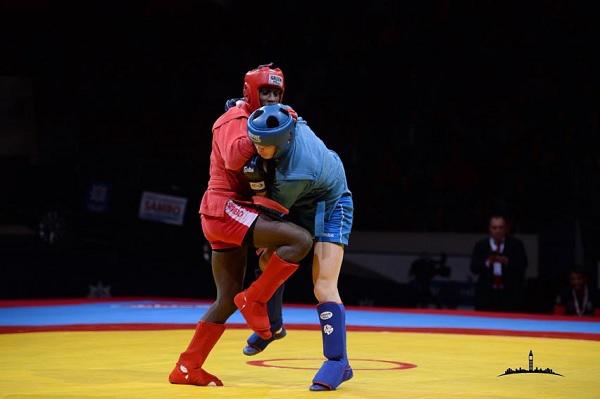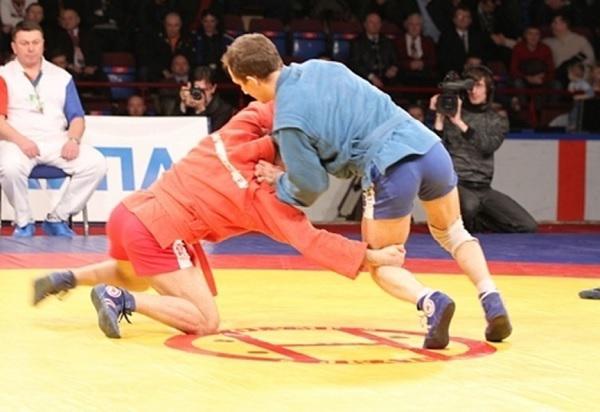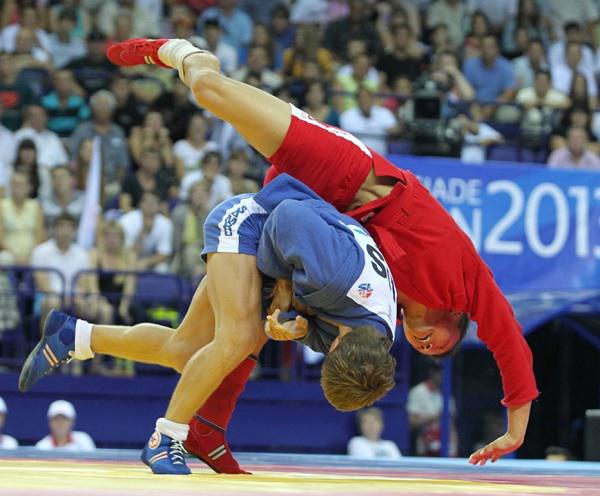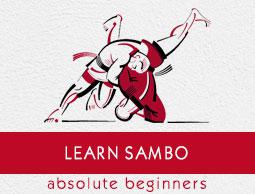Sambo - How to Play?
Sambo has conceptualized both freestyle wrestling and martial arts and its techniques and wrestling styles are more about self-defence rather than attack. For Viktor Spiridonov and Vasili Oshchepkov, it took years to develop the basics of this martial art and after their departure, the sport has been largely conceptualized, improved and perfected by many legendary pioneers of the sport.
In this sport, two players initially face each other in the ring and different points are there for each successful grappling or locks. Players start grappling and putting various holds on each other till the end. Most formats of sambo prohibits the player to strike the opponent to the ground.

Rather than fast body work, it’s agile movements and different locking skills that decide the winner. While playing, if an opponent quits during the submission locks, the player is declared winner. Otherwise, the winner is decided on the points gained by a player at the end of the match. There are certain rules regarding the duration of the holds and locks and for declaring a winner which are explained in rules section.
Sambo − Basic Strategies
Initially, sambo was developed as a basic martial art for improving hand-to-hand combats. With time, different formats of the art has been developed. Mostly in all formats of sambo, the basic style followed is a joint result of wrestling with Judo. Players work really hard on their leg lock skills and on ground control skills. In case of striking, the opponents follow different grappling techniques which mostly involves takedowns and submissions.
Mostly in case of Russian sambo, the basic focus is given on finishing the match as quickly as possible. Presently, there are different offshoots of sambo, only five of them have got worldwide recognition, which are: Sport Sambo, Combat Sambo, Self-defence Sambo, Freestyle Sambo, and Special Sambo. Among them sport sambo, combat sambo and freestyle sambo has been recognized by FIAS.
Combat Sambo
Among all formats of sambo, combat sambo includes the most aggressive forms of wrestling which involves different types of striking and grappling. It was developed to prepare an individual for any kind of situation and survive. It was mostly developed and utilized for the military training and allows different aggressive techniques like punches, kicks, elbows, knees, headbutts and groin strikes. In Russian military, combat sambo is employed as the training sport for close combats and for self-defence.

It includes techniques from both sport sambo and self-defence sambo but uses them in different ways. Combat sambo allows most of the techniques that are very dangerous and prohibited in other wrestling sports. The techniques of this format of sambo are very much similar to modern mixed martial arts. Players in combat sambo wear jackets similar to sport sambo. Players also use additional hand protection and sometimes shin and head protection.
Sport Sambo
Sport Sambo involves a lot of throwing, ground work and submissions. In case of this format of sambo, it has a lot of resemblance with Olympic Freestyle Wrestling or Judo, but the difference mostly lies in uniforms, rules, and protocols. For example, unlike Judo, sport sambo allows some of the leg locks excluding chokeholds. But in comparison to Judo, very less restrictions are there on gripping and holds.

Freestyle Sambo
Freestyle sambo was created and added to the sport by American Sambo Association in 2004. This format of the sport differs from other formats in case of certain rules such as choke holds and other submissions like certain neck cranks and twisting foot locks which are allowed in this format. Here, no strike is allowed and players mostly focus on throwing skills and fast ground work while playing.

Self-Defence Sambo
This format of the sport is mostly used for preparing an individual for self-defence against any kind of armed or unarmed forces. Self-defence sambo has resemblance with Aikijujutsu. This is mainly developed to train individuals like bank employees and women for self-defence.








